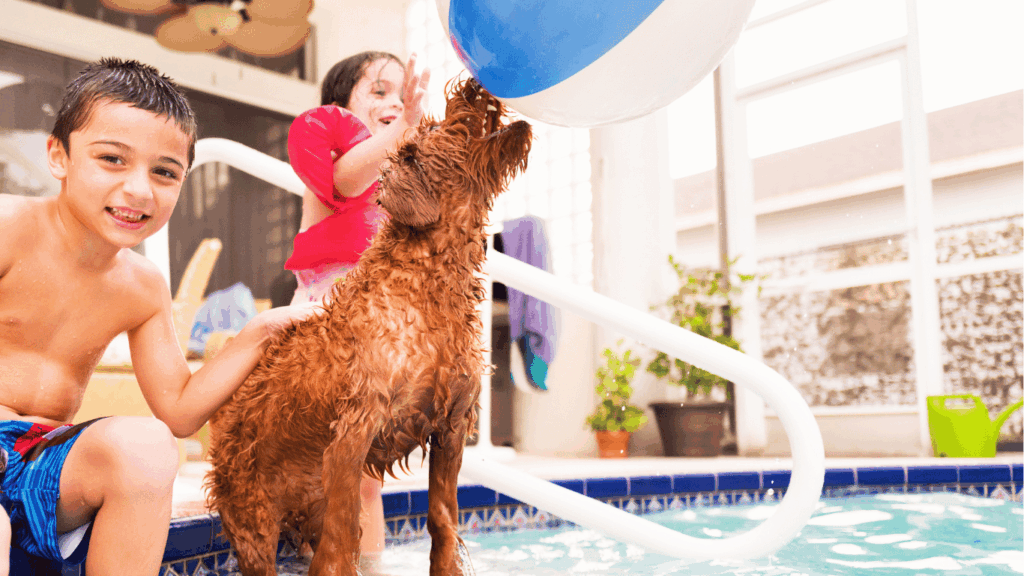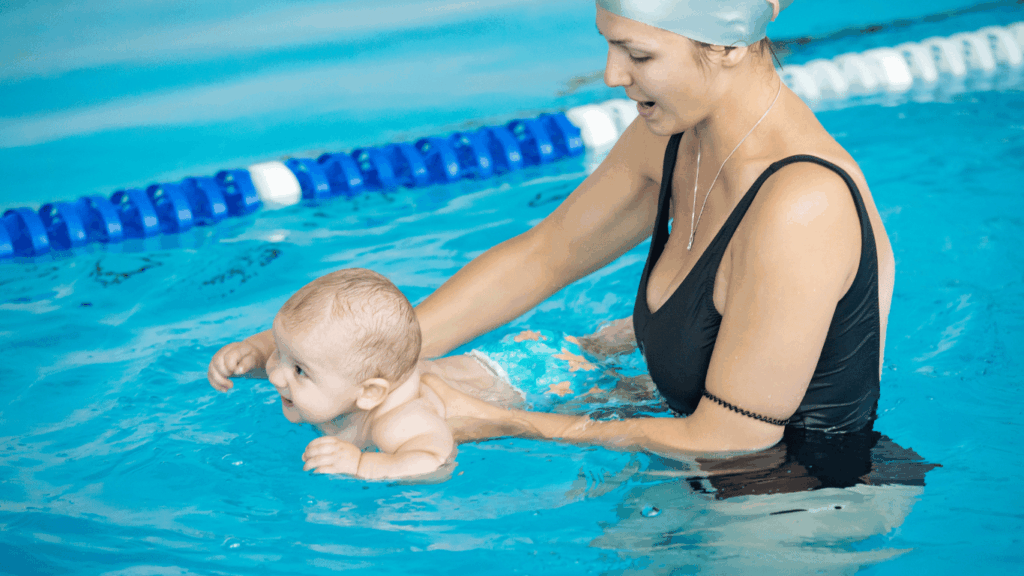Pools can be a source of joy and relaxation for families, but they also come with serious risks, especially for young children and pets. Pool safety for kids and pets should always be a top priority. Drowning is one of the leading causes of accidental death among young children, and it can also be a life-threatening danger for pets. Ensuring a safe swimming environment means planning ahead, using the right equipment, maintaining constant supervision and implementing comprehensive safety measures to protect your most vulnerable loved ones.

Understanding the Risks: Why Pool Safety for Kids and Pets Matters
Children under the age of five face the highest risk of drowning, with most incidents occurring in residential pools. It can happen quickly and silently, often in under 30 seconds. For pets, the danger is just as real. Many animals are unable to get out of a pool on their own, and waterlogged fur can make swimming much harder.
Even confident swimmers can be at risk. Children cannot properly assess danger, and pets may panic if they fall in, making it harder for them to find the pool exit.
Physical Barriers: Your First Line of Defense
Installing secure barriers is one of the most important steps in pool safety for kids and pets. A four-sided fence should fully enclose the pool area, be at least four feet high and have self-closing, self-latching gates. Gaps should be no more than four inches wide to prevent small children or pets from squeezing through.
An additional layer of protection comes from automatic safety covers that can hold significant weight. Floating covers or solar blankets should be avoided, as they can trap children or pets underneath. Only use covers that meet ASTM safety standards and can support at least 485 pounds per five square feet.
Door and window alarms that sound when access points to the pool are opened provide valuable extra seconds to respond. Water disturbance alarms can be useful too, but they should never replace direct supervision.
Supervision: The Most Important Safety Measure
No safety measure is more effective than active supervision. Assign a “water watcher” whose only responsibility is to keep eyes on everyone in or near the pool. This person should not be distracted by phones, books or conversations.
For children, maintain arm’s reach supervision at all times. Even skilled swimmers should be watched closely, as accidents or sudden medical issues can occur.
Pets require the same level of attention. Some dogs may enjoy swimming, but others may tire quickly or lack the ability to exit the pool without help. Always ensure your pets have a safe and easy way to get out of the water.
Swimming Skills and Water Safety Education
Swimming lessons and water safety training are key components of pool safety for kids and pets. Enroll children in age-appropriate lessons with certified instructors who teach both swimming techniques and water awareness. Remind children that lessons do not make them “drown proof” and that an adult must always be present.
Teach children to ask before entering the pool, to avoid running near water, and to recognize the difference between shallow and deep areas. They should also know how to call for help in an emergency.
Introduce pets to the water gradually and show them where the pool steps or ramps are. Pet life jackets can add another level of safety, especially for smaller dogs or those new to swimming.

Emergency Preparedness and Response
A big part of pool safety for kids and pets is being prepared for emergencies. Learn CPR for both people and pets, and display emergency numbers near the pool. Keep rescue equipment such as reaching poles, life rings and throw bags close by. Make sure the pool area is well lit and that surfaces are slip-resistant.
Practice emergency procedures with the whole family so everyone knows what to do, where the rescue tools are and how to get help without putting themselves at risk.
Chemical Safety and Pool Maintenance
Pool safety for kids and pets is not just about drowning prevention. Keep all pool chemicals locked away and out of reach. Never mix chemicals, and always follow the manufacturer’s instructions. Maintain proper water chemistry to prevent skin irritation, eye problems and waterborne illnesses.
Check fences, alarms, covers and all safety devices regularly to make sure they are in good working order. Repair any problems immediately.
Technology and Modern Safety Solutions
Technology can enhance pool safety for kids and pets. Options include motion sensors, underwater cameras and smartphone alerts that notify you of pool activity. Some wearable devices for children detect submersion and send alerts to a parent’s phone.
While technology can help, it should always be used alongside, not instead of traditional safety measures like physical barriers, supervision and emergency readiness.
Pool safety for kids and pets requires a layered approach. By combining physical barriers, active supervision, water safety education and emergency planning, you can create a safe environment for your family to enjoy the water with confidence.
FAQs
1. At what age should children start swimming lessons for better pool safety?
Children can begin basic water safety classes as early as six months with a parent present, but formal swimming lessons usually start around age four. Even then, constant supervision is necessary.
2. Are inflatable pool toys and floaties safe for kids?
No. Inflatable toys and floaties are not safety devices and can give a false sense of security. They can slip off or deflate suddenly. Only Coast Guard-approved life jackets are recommended.
3. How can I make my pool safer for pets without restricting their access?
Install pet-friendly steps or ramps, teach your pet where they are, consider pet life jackets, and never leave pets unattended around water. Some owners add removable fencing that allows supervised access.
4. What should I do if I find a child or pet unconscious in the pool?
If it’s safe, remove them from the water, call emergency services immediately, and start CPR if you are trained. Pet CPR techniques differ slightly, so consider taking a class from your vet.
5. How often should I check my pool safety equipment and barriers?
Inspect all barriers, gates, alarms and covers monthly. Test gate latches, change alarm batteries and check cover mechanisms regularly. A yearly professional inspection is also recommended.

